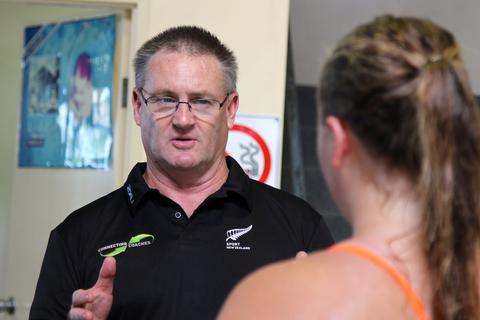Performance Science and Why it’s time has come.

“In short science has its limitations. Western science is characterised by
reductionist principles; but we reach a point at which the reduction becomes
disassociated from the phenomena it is trying to explain” P.Jones 1998
It’s time.
It’s time for the Sports science industry to seriously change the way we do business.
It’s time we let go of the outdated, simplistic single cause / single effect model of research and embraced a genuine integrated, multi disciplinary approach to solving performance problems.
It’s time for Performance Science to come of age.
The Single Cause – Single Effect Model.
Look at the thousands of research papers published in the world this year.
Most of them still pursue the outdated, single discipline, single “cause – effect” approach to research that is totally out of place and inappropriate in high performance sport in this century.
They still promise coaches and athletes that changing one element of a program – be that physical, mental, technical or tactical – will result in a competition performance improvement.
Take a typical single discipline sports science research paper and the research model almost universally embraced by the sports science community:
- The researchers complete a detailed literature review – great;
- They painstakingly design the appropriate methods and get ethical approval – fantastic;
- They complete the research with all due academic rigour observing all reliability and validity conventions – excellent;
- They write up the paper, submit it to a respected Journal for peer review and hopefully publication – superb.
And the paper concludes with something like, “The results of this study indicate that if you do X, you will get Y”.
And now the fun begins.
Delivering the Information to Coaches and Athletes
The researchers then hit the sports science and coaching journal “road” and the sporting conference “circuit” presenting their findings as a breakthrough in sports science and that coaches and athletes should make changes in their training programs as a result.
Now I know many sports scientists reading that last paragraph will say, “We don’t do that. All we do is present information and it is up to the coaches and athletes to decide if and how they will use the information in their preparation and competition programs”.
Rubbish.
If you present information at a conference to a group of coaches and athletes you are saying, “This information will give you a performance advantage and you should adopt it”. To believe anything else is delusional.
It’s a bit like playing music to someone and saying to them “whatever you do, don’t listen to this”.
The inference from the research published in the plethora of sports science journals and presented at the innumerable sports science conferences is that this information, if applied, will enhance the competition performance of athletes.
What is happening?
Why else are researchers given research grants from the high performance sports funding agencies if not to find ways to enhance the performance of elite athletes?
But – and this is a big but: nothing in human sports performance works in isolation.
Imagine you are a researcher who has just published a paper on something you believe will give an athlete a performance advantage in competition.
You present the paper at a coaching conference.
A coach incorporates your findings into their training program.
An athlete prepared by that coach adopts your new research finding into their program.
All it takes is a text message from the athlete’s girlfriend saying “We should see other people while you are training in Europe” and the athlete’s performance potential goes out the window.
And that’s the big problem with most of the sports science research published around the world – it assumes that everything else in the subject’s (athlete’s) life will remain constant while the single cause creates the single effect.
Look at the papers done on nutrition supplements like creatine. Most conclude with a statement like “although more research is necessary the findings of this study suggest that creatine may enhance the performance of elite athletes involved in power sports” – i.e. single cause will give a single effect.
Again – the big hole in this type of research is the assumption that all other aspects of the athlete’s preparation will remain constant and in real life that just does not happen.
Conclusion
So, it is time that we all accepted that the way we have done sports science research – specifically sports science research done with the intention of enhancing the competition performance of elite athletes – for the past 50 years needs to change.
Who is going to step up and lead the change?
Who is going to be bold enough to look at the way we do research, challenge it and adopt a real multi disciplinary approach to finding new and better ways of enhancing the competition performance of athletes?
Is there a University or High Performance Sports Academy in the world willing to work with me and drive this change?
One thing we know for sure…someone will: and that someone will change the sports science industry forever.
Wayne Goldsmith



6 Comments
Alan · September 16, 2009 at 7:44 am
Nice post Wayne! The bio-statistician have known this for years.
The few soundly designed project that are also complex enough to address multiple variables, confounders and interactions AND still permit a simple interpretation are a rare find indeed.
And don’t forget that sport science does not deal with normal data distributions either.
Coaches and sport science support teams must understand statistics to help understand fact from fiction.
Cheers!
Wayne Goldsmith · September 16, 2009 at 1:08 pm
Thanks Alan.
High performance athletes are like walking, talking, living, breathing performance systems – with everything dependent on everything else.
The reductionist approach just does not apply to applied sports science research.
Thanks,
WG
Jeremy Pryce · September 27, 2010 at 8:14 pm
“We should see other people while you are training in Europe” LMAO!!! If that doesn´t shake the bloke, nothing in an Olympic event will. 🙂 Hahahaha!!
Wayne Goldsmith · September 28, 2010 at 12:25 pm
Thanks JP.
To me it is always the issue of the “whole” being greater than the sum of the parts….time we all let go of the reductionist approach to sports science and moved towards the holistic approach.
Thanks,
WG
James Marshall · October 8, 2010 at 12:36 am
Hi Wayne,
but it comes down to funding and peer recognition: so it will continue. Also, there is a massive confirmation bias present in academia, with peer reviewed journals often inhibiting new research.
Wayne Goldsmith · October 8, 2010 at 9:13 am
Thanks James.
I am still waiting for a University to take this challenge seriously and start a PERFORMANCE SCIENCE under grad and post grad program and take the lead in the “revolution”.
Read some of the stuff on the Web about the “reductionist” approach to science and consider its limitations in sport and then look at some of the alternate scientific approaches like “emergence”.
Sooner or later it will sink in but I will be long dead in the cold cold ground when it does – even if I live to a 100!
WG